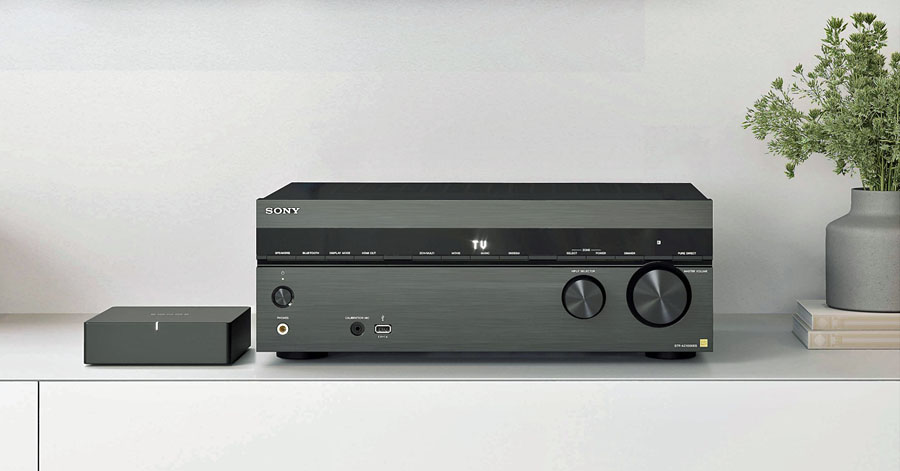When Sonos launched its first product, the Zone Player 100 (ZP100) in 2005, it was kind of a big deal. Before then if you wanted to play music all over your home, you needed lots of components: source components, receivers or amplifiers, switches, and wires – lots and lots of wires. But Sonos promised to free us from all that.
The Sonos mission was represented by a simple statement: “Any Song. Any Room.” To that end, the ZP100 could integrate with new services like Napster, Pandora and Rhapsody dedicated specifically to streaming music over the internet (any song) and play these songs anywhere in your home that had a power outlet (any room). The ZP100 was fairly expensive ($499) and required you add a pair of your own speakers plus a Sonos Controller device like the CR100 ($400). But the products earned rave reviews, the customer base grew and the wireless whole home music market was born.
Sonos now offers wireless speakers and amplifiers for nearly all use cases: battery-powered portable speakers, desktop and countertop speakers, amps that allow you to use your own speakers, even Dolby Atmos-compatible soundbars that can create a full 7.1.4-channel immersive surround sound experience in your living room or home theater. The Sonos controller went from being a piece of hardware to a free app for Android, iOS, Windows and Mac. So now, as long as you have a smart phone, a tablet or PC and a Sonos speaker or three, you can enjoy the benefits of the Sonos ecosystem: Any song. Any room.
But many consumers (and custom installers) prefer the flexibility and power of a component-based sound system for their primary viewing and listening system. A small wireless speaker is fine for the bedroom, but I want to rock out in my living room. To this end, Sonos offers the Sonos Port ($449).

The Sonos Port allows you to turn any component-based audio or home theater system into both a Sonos playback zone and a source for other Sonos speakers in your home. Connect the Port to your receiver and now you can use the Sonos app to play back music in your living room. You can also choose whatever is connected to that receiver as a playback source for any Sonos speaker in your home. Whether this process is easy or hard depends on the gear you’re connecting it to.
Works with Sonos
Sonos offers a “Works with Sonos” certification program which identifies amps and receivers which work particularly well with the Sonos Port. If you own one of these certified components, then things are pretty simple once you get everything set up. Selecting the Port as a source in the Sonos app will automatically power up the receiver or amp and switch it to the correct input for Sonos playback. You’ll also be able to control the volume of that system from within the Sonos app on your phone.
I tested the Sonos Port with Sony’s new STR-AZ1000ES receiver. It’s part of the first batch of Sony receivers to receive “Works with Sonos” certification. Set-up is not plug-and-play but it’s pretty straightforward and should be similar with any “Works with Sonos” product. You’ll need to add the Port to your Sonos system, plug it into your receiver and identify how you’re connecting it to the receiver (which inputs and outputs).

Setting Up a Sony Receiver with a Sonos Port
In the Sony’s “Network settings” menu, there’s a new “Works with Sonos” option. Here you identify which input you connected the Sonos Port to. The Port offers both analog stereo RCA outputs as well as a coax digital output. I used the coax digital output for testing. In that “Works with Sonos” menu, you can also set a default volume level for the Sonos Port. This is handy so you can prevent the music from coming on too low or too loud. You can also select whether you want the Port to playback over the receiver’s main zone or the Zone 2 or Zone 3 output of the receiver. Since I wanted to play music from Sonos over the main speaker system, I selected “Main” as the output zone. Once the “Works with Sonos” settings were done, I had to then assign the coax digital output to the input I had specified in the previous setting.

With the receiver settings done, you’ll also need to add your Port to your Sonos system and make some adjustments here as well. Just get into Sonos “Settings… System… Add Product” and the Sonos app will walk you through adding the new device. Once it’s added to Sonos and you identify the zone or room name, you will need to adjust a few other things in the Sonos app. In the device settings for the Port, you can adjust both the Line Input and the Line Output.

The Line Input setting in the Sonos app allows you to use a source from the Sony receiver as a source for any of the speakers in your Sonos system. Before you get too excited, you can’t actually switch sources on the Sony receiver from within the Sonos app – you’ll just get whatever active device is set to that zone on the receiver. You’ll actually need to go into the Sony receiver to switch between those sources. In my case, I used the Sony receiver’s “Zone 3” output as the input for the Sonos Port and selected the receiver’s tuner as the Zone 3 source. This allowed me to play local radio stations through Sonos to all of the Sonos speakers in my home. You could do the same with a turntable or CD player or virtually any other component connected to the receiver.

As for adjusting the Line Out, this will allow you to control the Sonos volume on the receiver from the Sonos app. There are three settings here. “Fixed” sets the output level of the Sonos to a fixed line level output. Then you’d need to adjust the Sonos playback volume on the Sony receiver, which is not ideal. “Variable” means the output of the Sonos port varies with the Sonos app volume. This works OK but it can get tricky if the Sony’s own volume control is set too high or too low. A Line Out setting of “Pass-through” means that the Sonos app volume control will actually adjust the master volume on the receiver. “Pass-through” is what Sonos recommends for “Works with Sonos” certified products. Unfortunately (per Sony) “Pass-through” mode is not currently supported on this Sony receiver currently so I went for “Variable” instead. There is an additional setting in the Sony “Works with Sonos” menu that allows you to set a default volume level for the Port, so this combined with “Variable” output works pretty well in most cases.
Once everything was set up, the Sonos Port and Sony receiver played nicely together. When I selected “Basement” as the room in the Sonos app, and played music in that zone, the Sony receiver powered itself up and switched to the correct input as necessary. Sound quality was generally good, depending on the quality of music I was streaming through Sonos. Lossless streams and FLAC files sounded fine, without any apparent audio artifacts introduced by the components.

I was able to select the Sony receiver as a source in the Sony app for playback to other Sonos speakers in my office, bedroom and bathroom. The selection here was a bit limited, by the Sony receiver itself. The Sony receiver apparently does not convert any digital inputs to its Zone 3 analog output, so I was not able to select my Apple TV 4K or Fire TV 4K Max streaming boxes as sources for Sonos. Higher end receivers which do convert digital sources to analog for their zone outputs would not have this limitation. Also, without an HDMI output, the Port is not able to support immersive sound formats such as Dolby Atmos. The Port is strictly for 2 channel stereo only.
Pros:
- Allows you to bring the Sonos platform to your living room or home theater system
- Works well with “Works with Sonos” devices with automatic power-on, switching and volume control from app
- Supports Google Cast and Apple AirPlay 2 from compatible devices
Cons:
- Expensive
- No support for Spatial Audio/Immersive Sound
The Bottom Line
The Sonos Port does exactly what it promises: It brings the Sonos app and platform into your living room or home theater. Set up is straightforward and operation during our testing was reliable (other than the “Pass-through” option not working on the tested receiver). Sound quality is also good with the option for analog RCA or coax digital outputs. While the Port is fairly expensive, its intended market – custom installers implementing high-end home theaters and home audio systems – won’t flinch at the price. There is some room for improvement though.
Sonos has shown its commitment to immersive sound with its support for Dolby Atmos in both Amazon Music and Apple Music (coming March 28). For the Sonos Port to support this, it would need an HDMI output capable of passing a Dolby TrueHD or Dolby Digital+ stream with Atmos encoding to a compatible receiver or processor. Ideally, it would be nice to have the Sonos integration baked directly into the receiver hardware. Instead of “Works with Sonos,” it could be “Sonos on Board.” This would simplify operation and would enable immersive sound options. Since many receiver buyers may not be interested in that feature, the company could charge a one-time upgrade fee to customers who wish to add Sonos functionality. But that type of functionality is not currently available.
If you’re a Sonos fan but want to stick with a component-based sound system for your living room or home theater, the Sonos Port will get you there: Any Song. Any Room.
Where to Buy:
Related Articles:
Sonos Unveils One-Piece Dolby Atmos Speaker: the ERA 300
Three Great Dolby Atmos Soundbars You Can Buy Today

































Turnito Eleven
March 18, 2023 at 12:30 pm
Cons: No support for Spatial Audio/Immersive Sound…I thought that was what the volume knob on the amp was for.
ORT
March 29, 2023 at 8:26 pm
HEOS Link. Does the same thing for $350. I know as I’ve set up a few for friends that just want to keep their cool vintage stuff and have access to the music on the interwebs.
I have one myself. It works great! It is a wonderful time to be a home music enthusiast!
ORT